When it comes to the animal kingdom, few creatures are as fascinating—and as awe-inspiring—as the world’s largest snakes. These impressive reptiles span continents and habitats, from the lush forests of South America to the dense jungles of Southeast Asia. Known for their sheer size, strength, and sometimes elusive nature, they have adapted incredible features to thrive in their environments. Here, we’ll explore some of the biggest and heaviest snakes found in the wild, each with unique characteristics that make them remarkable predators.
King Cobra
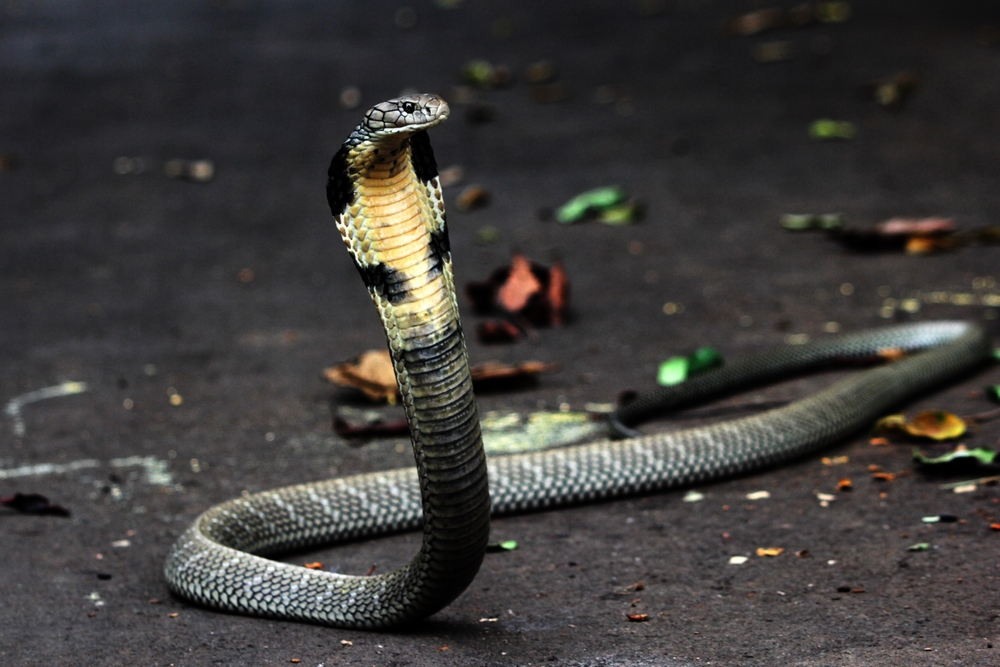
The King Cobra, Ophiophagus hannah, holds the title of the longest venomous snake in the world, often reaching lengths of up to 18 feet. Although not as heavy as some of the larger pythons and anacondas, it can weigh up to 20 pounds and belongs to the Elapidae family. Native to forests and plains of Southeast Asia, this species is known for its potent venom and distinct hood, which it flares when threatened. Unlike most snakes, it feeds almost exclusively on other snakes, including venomous species, and can strike with incredible accuracy. Its impressive size and unique dietary habits make it an apex predator in its habitat, capable of preying on a wide range of snake species. Despite its fearsome reputation, it is not typically aggressive towards humans and prefers to avoid confrontation. When cornered, however, it will stand its ground, sometimes raising a third of its body off the ground. It can produce a significant amount of venom in a single bite, enough to kill an elephant. Its scientific name, Ophiophagus, translates to “snake-eater,” reflecting its specialized diet.
Boa Constrictor
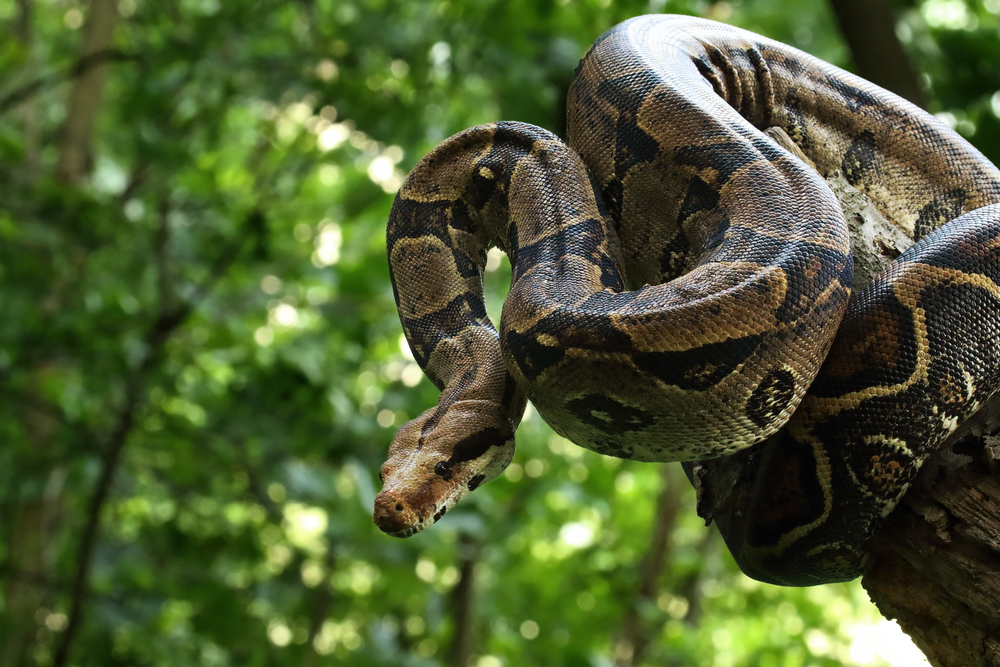
The Boa Constrictor, Boa constrictor, is one of the most widely recognized large snakes in the world, belonging to the Boidae family. This species typically reaches lengths of around 13 feet and weighs up to 60 pounds, though some individuals in captivity have been known to grow larger. Native to Central and South America, it is commonly found in rainforests, savannas, and semi-desert regions, where it uses its strong, muscular body to constrict its prey. Its coloration varies significantly depending on the habitat, ranging from brown to tan with darker markings, offering it natural camouflage. This non-venomous snake preys on a variety of animals, including birds, small mammals, and even other reptiles. While not as massive as some of its relatives, it is a skilled ambush predator, capable of taking down animals much larger than itself. Its hunting strategy is marked by patience, as it lies in wait for unsuspecting prey. In captivity, it can live for over 30 years with proper care. Despite their size, they are a common choice for exotic pet owners due to their relatively docile nature.
Dark-Spotted Anaconda
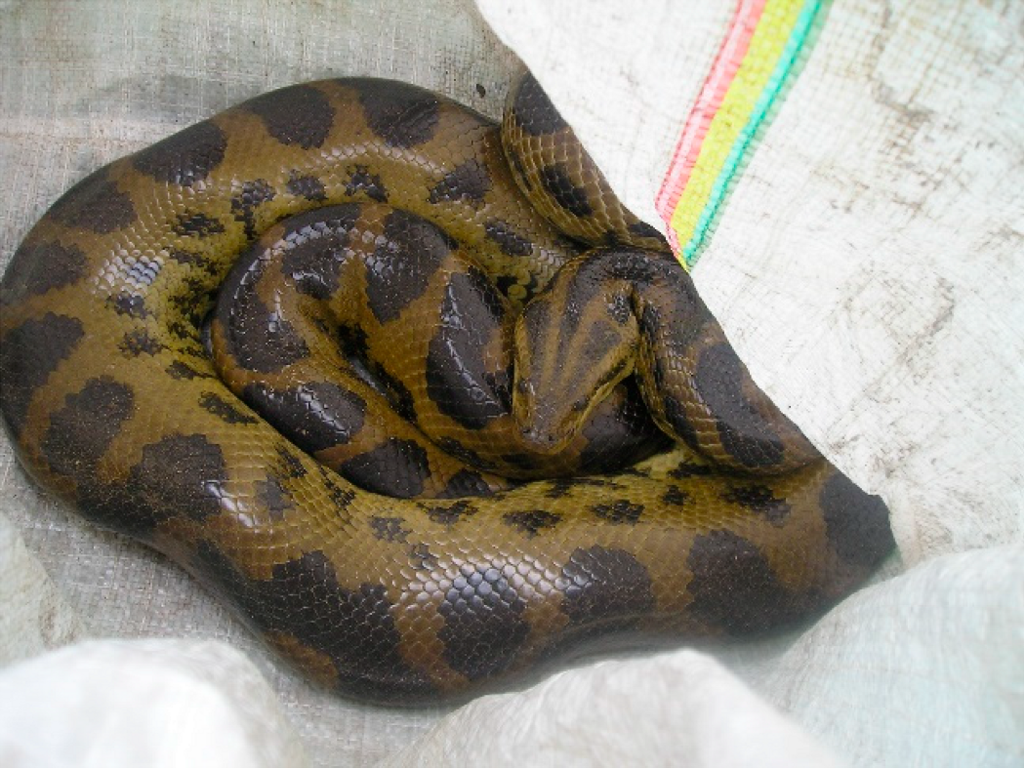
The Dark-Spotted Anaconda, Eunectes deschauenseei, is another large member of the Boa family, closely related to the Green Anaconda. It can grow up to 13 feet long and weigh around 60 to 80 pounds, making it one of the heaviest snakes in its habitat. This species is native to the swampy and floodplain regions of South America, particularly in Brazil and French Guiana. It has a yellowish-brown body with distinctive dark spots, allowing it to blend seamlessly into murky waters as it hunts. Like other anacondas, it is non-venomous and relies on its powerful coils to suffocate prey such as fish, birds, and small mammals. Known for its reclusive nature, it spends much of its time submerged, only emerging occasionally to bask in the sun. Due to its specific habitat, it is rarely seen and remains one of the lesser-known anaconda species. It is sometimes mistaken for its larger cousin, the Green Anaconda, though it is smaller and less aggressive.
Amethystine Python
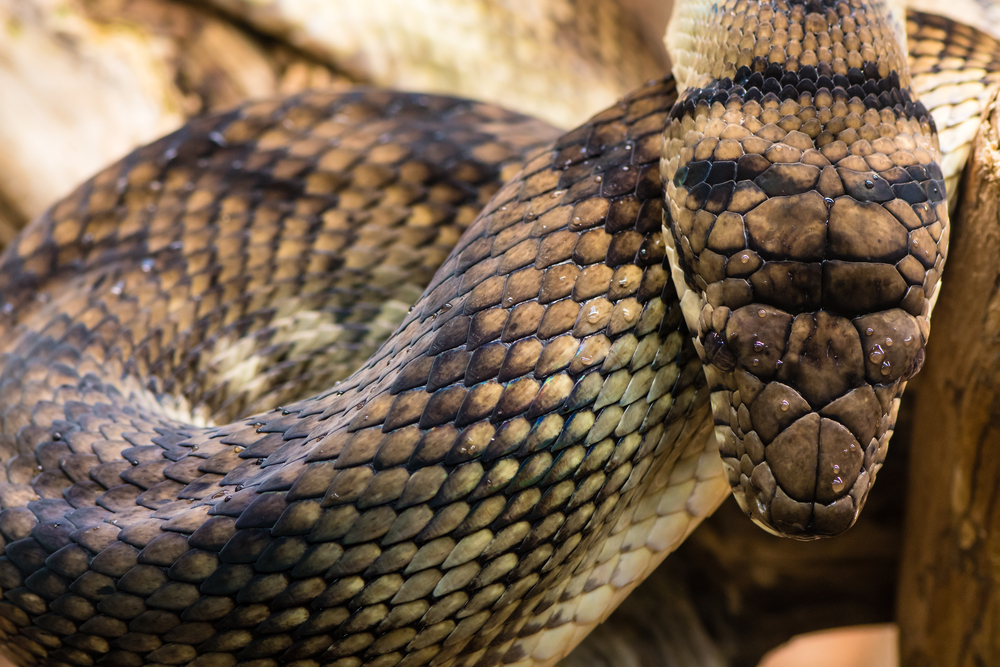
The Amethystine Python, Morelia amethistina, is one of Australia’s largest native snakes, reaching up to 23 feet in length. Known for its stunning iridescent scales that display a rainbow-like sheen in sunlight, it is also called the Scrub Python. It belongs to the Pythonidae family and is found in tropical rainforests and savannas across Northern Australia, Papua New Guinea, and parts of Indonesia. Although lengthy, it typically weighs between 50 and 100 pounds, allowing it to climb trees and move swiftly to capture prey. Its diet includes birds, rodents, and marsupials, and it often strikes from above, using its height advantage. Though non-venomous, it has a reputation for being somewhat defensive, standing its ground if threatened. The unique coloration and significant size of this python make it a standout species in its habitat. It has been known to venture into suburban areas, usually in search of prey or shelter. Despite its size, it remains elusive and is well-camouflaged within dense foliage.
Yellow Anaconda
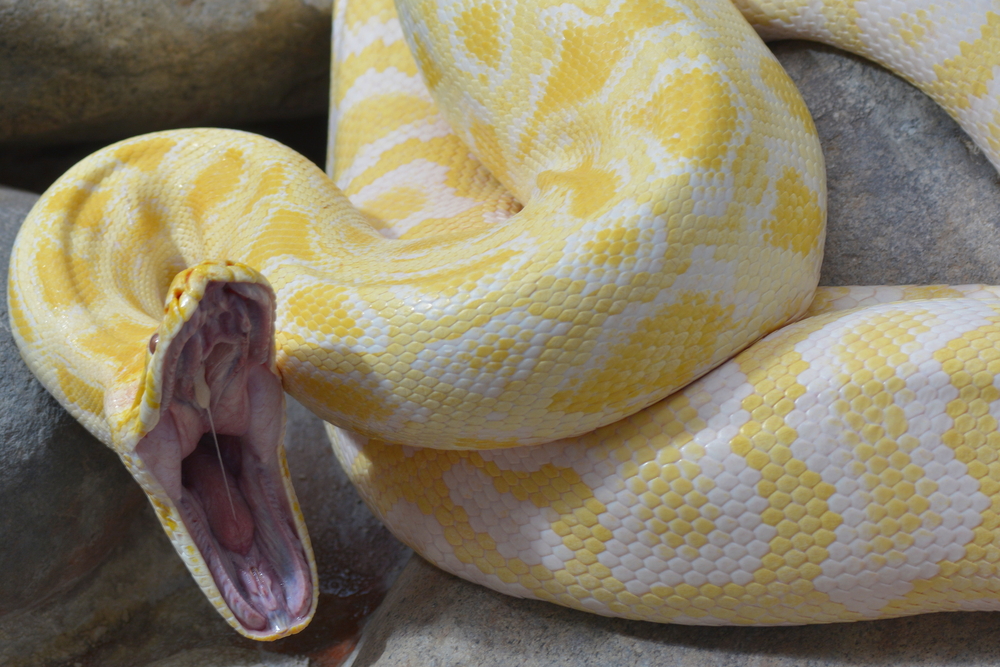
The Yellow Anaconda, Eunectes notaeus, is a South American native and a slightly smaller cousin of the Green Anaconda, yet it is still an impressive snake in terms of size. Typically, it grows up to 15 feet long and weighs around 120 pounds, marking it as a substantial member of the Boa family. It inhabits swamps, marshes, and slow-moving rivers across Argentina, Paraguay, and Brazil. With a bright yellow or greenish-yellow base color and dark spots, it blends well into its wetland environment. Like other anacondas, it is a constrictor, using its coils to subdue prey such as fish, birds, and small mammals. It is an excellent swimmer, capable of moving with agility through water, where it spends much of its life. It is less aggressive than the Green Anaconda but still knows how to defend itself if threatened. This species faces challenges due to habitat loss and hunting for its skin. In captivity, it can live over 20 years with proper care and nutrition.
Indian Python
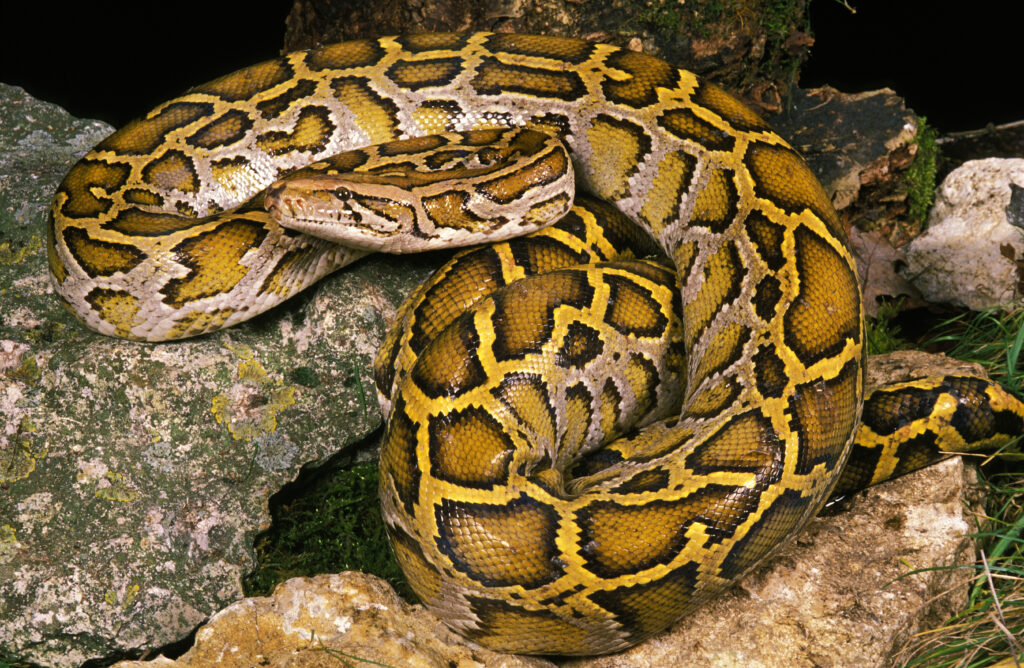
The Indian Python, Python molurus, also known as the Indian Rock Python, is one of South Asia’s largest snake species. It can grow up to 20 feet long and typically weighs around 150 pounds, although some individuals reach slightly higher weights. A member of the Pythonidae family, it is commonly found in forests, grasslands, and river valleys across India, Nepal, and Sri Lanka. Its body has a yellowish or whitish base color with dark brown blotches, offering natural camouflage across varied landscapes. Like other large constrictors, it subdues its prey by wrapping around it, with a diet including birds, mammals, and reptiles. Known for a relatively gentle temperament compared to other pythons, it rarely poses a threat unless provoked. This species is listed as vulnerable by the IUCN due to habitat loss and poaching. It is a revered figure in Indian mythology, symbolizing strength and resilience. It is also a proficient swimmer, capable of holding its breath underwater for extended periods.
Burmese Python
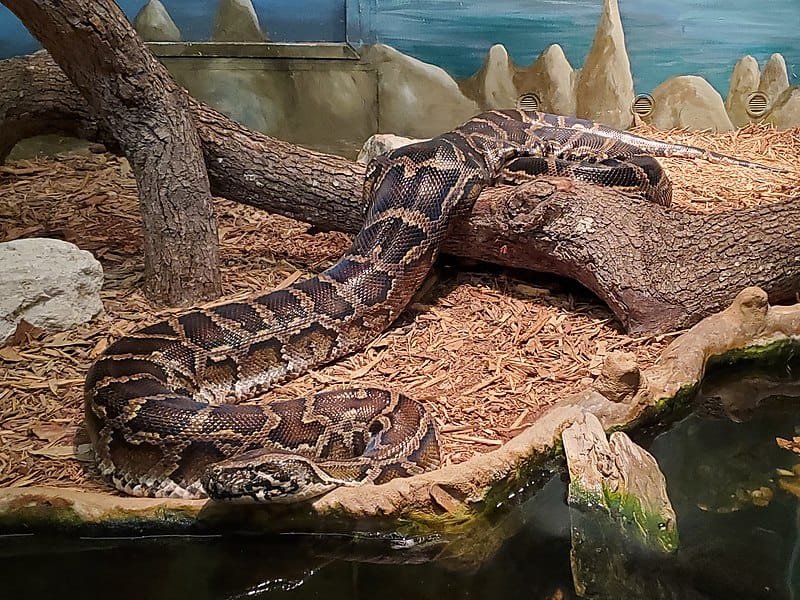
Native to Southeast Asia, the Burmese Python, Python bivittatus, is renowned for its massive size and weight. They typically grow over 18 feet long and can weigh up to 200 pounds, though some individuals in captivity have exceeded 400 pounds. It is commonly found in marshy and forested areas across Thailand, Vietnam, and Myanmar. It has a tan base color with dark brown blotches, making it well-suited for camouflaging in muddy or forested terrain. As an ambush predator, it waits for unsuspecting prey, which includes birds, mammals, and reptiles. Like other constrictors, it kills by wrapping tightly around its prey and squeezing until the prey cannot breathe. It has become invasive in the Florida Everglades, where it poses significant ecological threats due to its voracious appetite. They have been documented consuming prey as large as alligators, highlighting their adaptability in diverse environments. In the exotic pet trade, their immense size often challenges their owners.
African Rock Python
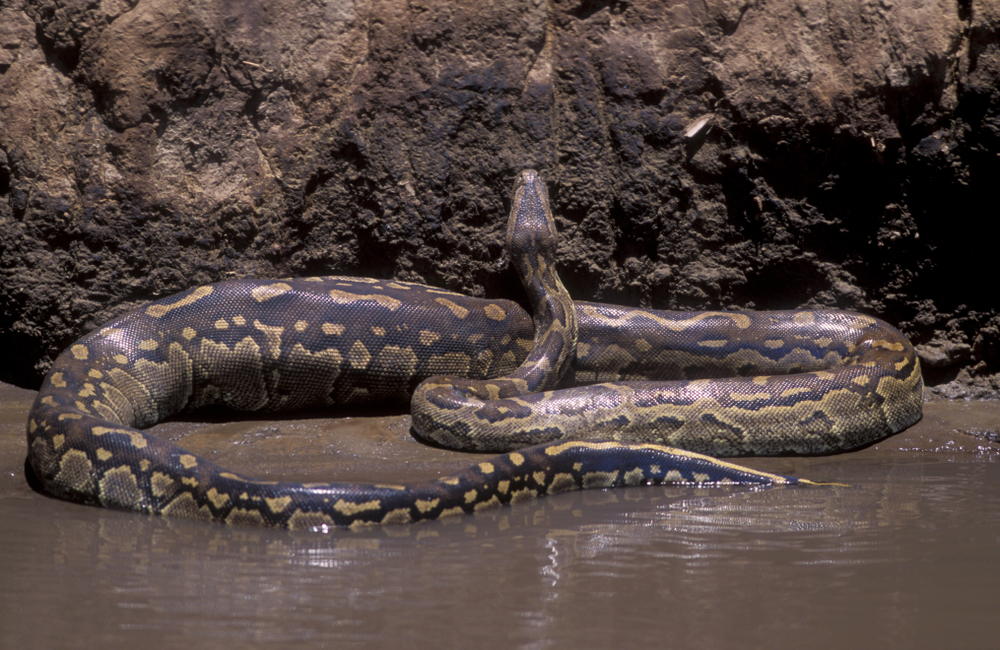
The African Rock Python, Python sebae, is among the largest snakes in Africa, often growing beyond 20 feet in length. Weighing up to 250 pounds, this muscular constrictor is a formidable member of the Pythonidae family. It is widespread throughout sub-Saharan Africa and thrives in various environments, from savannas to grasslands and near human settlements. Its dark brown or olive coloring, accented by lighter patches, offers excellent camouflage in rocky and grassy areas. Known for its aggressive temperament, it defends itself fiercely when threatened, delivering a painful bite if necessary. Its diet includes a range of animals, such as antelopes, goats, and large birds, and it is known to actively hunt its prey rather than solely rely on ambush. This species is often targeted for its skin, adding to conservation concerns. It is also surprisingly agile and can even climb trees, showcasing its adaptability. In some cultures, it is considered a symbol of power and resilience.
Reticulated Python
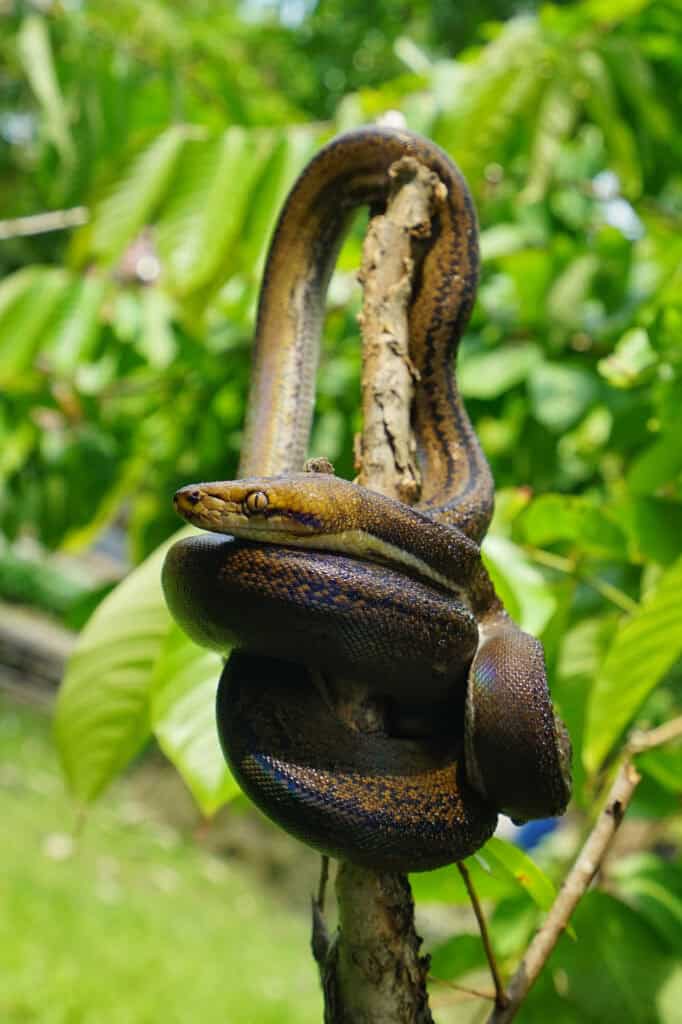
The Reticulated Python, Malayopython reticulatus, is the longest snake in the world and often exceeds 30 feet in length. It can weigh up to 350 pounds, making it both lengthy and heavy, with individuals found throughout Southeast Asia, including Indonesia, the Philippines, and Malaysia. As a member of the Pythonidae family, this snake has an intricate geometric pattern along its body, providing effective camouflage in dense jungles. It is a powerful constrictor, capable of subduing prey such as deer, pigs, and occasionally even small primates. Despite its size, it is highly adaptable, thriving in environments ranging from tropical forests to agricultural areas. Its impressive size and unique coloration make it one of the most iconic snakes in the world. Although it generally avoids humans, it can be found near villages in search of food. In captivity, some individuals have lived for over 25 years, making them popular in reptile collections. It has a unique jaw structure that allows it to consume prey significantly larger than its head.
Green Anaconda
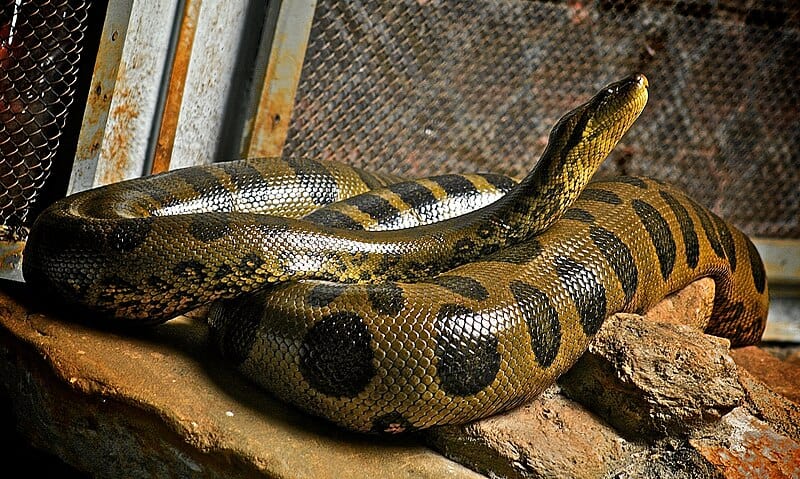
The Green Anaconda, Eunectes murinus, is the heaviest snake in the world and belongs to the Boa family, often exceeding 29 feet in length. Weighing up to 550 pounds, it dominates the swampy and murky waters of the Amazon and Orinoco River basins. Known for its olive-green coloring with black spots, it blends seamlessly into aquatic habitats, where it lies in wait to ambush prey. It kills by constriction, using its powerful body to squeeze and suffocate prey, which can range from fish and birds to deer and even caimans. Due to its immense size, it is relatively slow on land but an agile and stealthy swimmer. Although it is not venomous, its sheer strength makes it one of the most formidable predators in South America. Its unique breeding process involves females emitting pheromones to attract multiple males, sometimes leading to a breeding ball. It can hold its breath underwater for up to 10 minutes, enhancing its stealth when hunting aquatic prey. Despite its formidable size, it faces threats from habitat loss and hunting for its skin.
This article originally appeared on Rarest.org.
More from Rarest.org
18 Mysterious Creatures of the World`s Most Isolated Islands
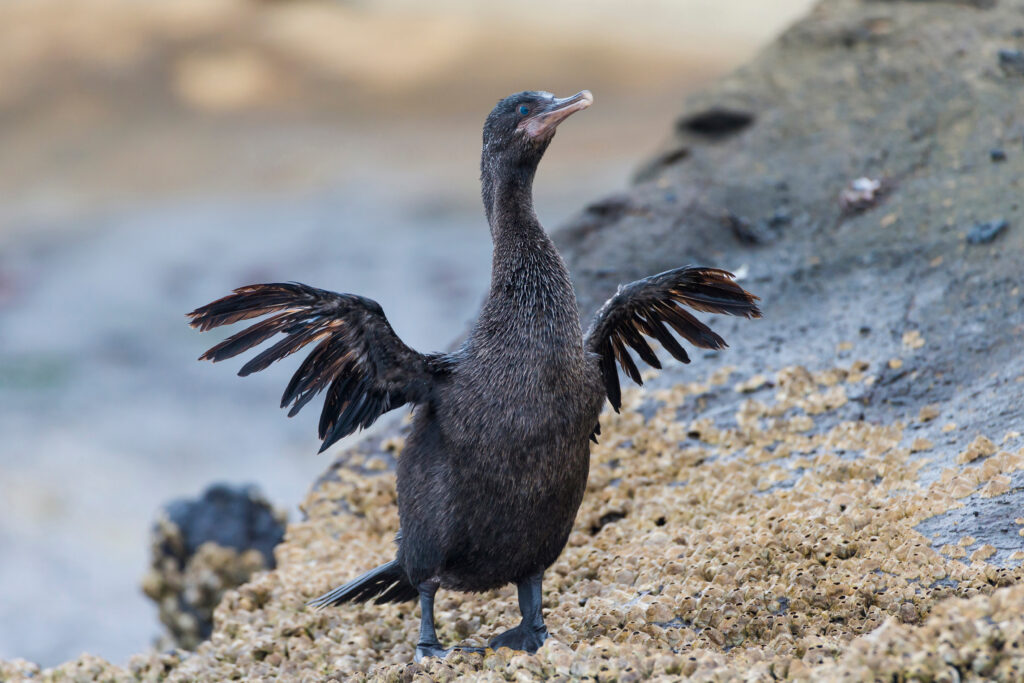
Isolated islands often hide secrets, and some of the world’s most mysterious creatures live in these remote areas. These animals have evolved uniquely, shaped by their environment and isolation. Read More.
10 Exotic Island Birds Found Nowhere Else on Earth
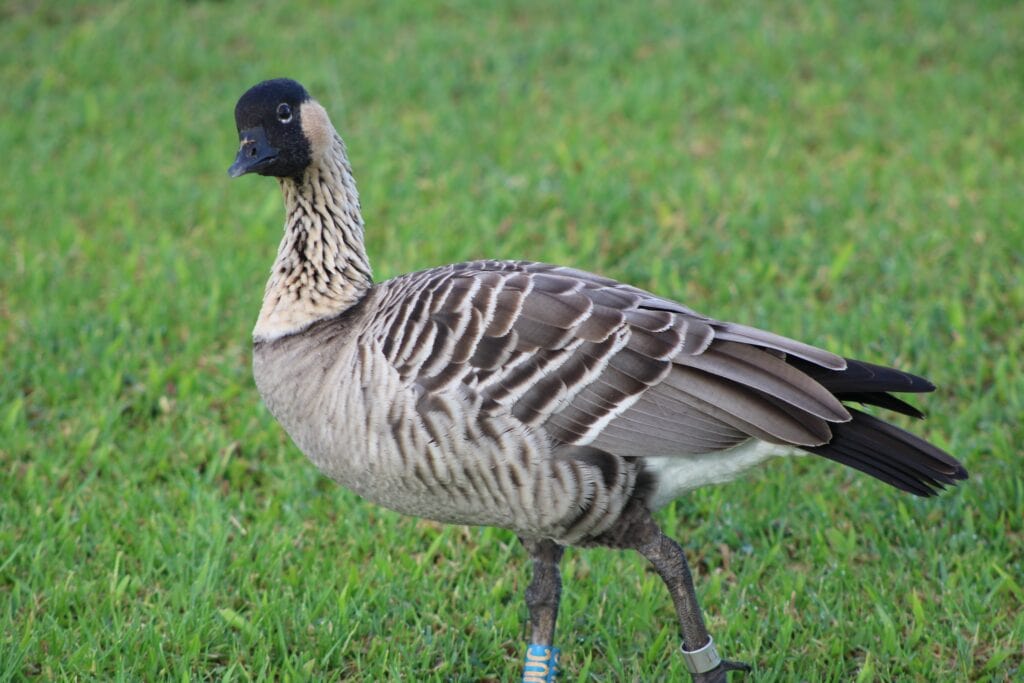
Islands are home to some of the most unique and fascinating birds on Earth, many of which can’t be found anywhere else. These exotic island birds have evolved in isolation, adapting to their specific environments, making them truly one-of-a-kind. Read More.
15 Towering Sand Dunes Creating Otherworldly Landscapes

Towering sand dunes are some of the most mesmerizing natural wonders on Earth, creating landscapes that seem almost otherworldly. These colossal formations, sculpted by wind and time, rise dramatically from the ground, offering breathtaking views and a sense of awe to those who witness them. Read More.
